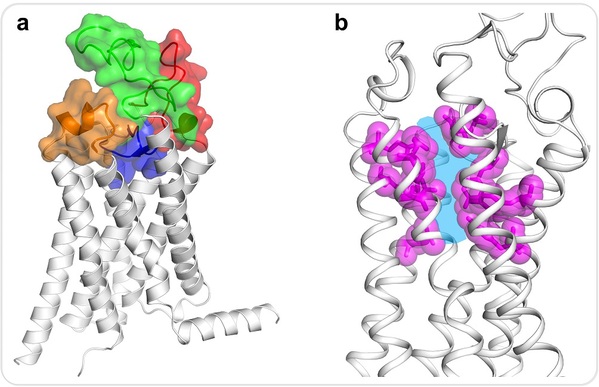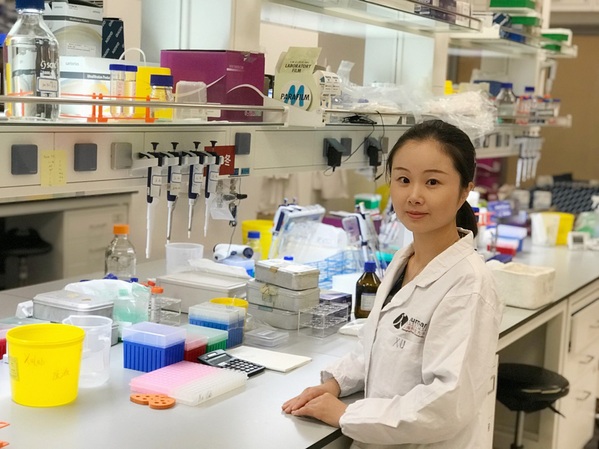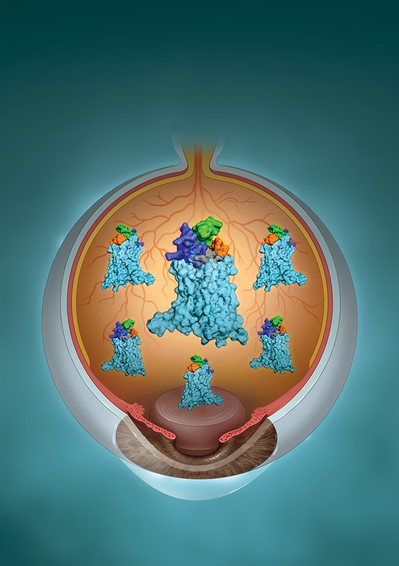August 23, 2018 - The Xu Laboratory at the iHuman Institute of ShanghaiTech University has deciphered the high-resolution crystal structure of the first human Frizzled receptor. As a gatekeeping protein in regulating the fundamental Wnt signaling in embryonic development and tumorigenesis, the Frizzled receptors (FZDs) have been cancer drug targets for decades without success. However, these results, which illustrate the unique architecture of Frizzled-4 in ligand-free state and explain the long-standing hurdle of identifying potent ligand for this family of receptors, will benefit basic and therapeutic research that could lead to important new drug discoveries. These new findings are published today in the advanced online edition of the journal Nature, titled “Crystal structure of Frizzled 4 receptor in ligand-free state” by Yang et al.
“In order to understand why no one has been able to develop good tool ligands or drug molecules for FZDs and to tackle the mystery of FZD signaling, we solved the intact transmembrane domain structure of Frizzled4 receptor (FZD4) at 2.4 angstrom resolution,” said Fei Xu, Assistant Professor at iHuman Institute and the School of Life Science and Technology, ShanghaiTech University, and corresponding author of the study.
Surprising to the authors was the observation that the traditional orthosteric ligand binding site is very narrow making it hard for small molecules to enter or bind. “These findings improve our understanding of the FZD ligand and signaling, and show that ligand design for this pocket may require special considerations that could be inspired by this crystal structure,” said Fei Xu.
“To generate a more stable human FZD4 protein amenable for structure determination in the absence of a ligand (apo state), the team spent four years and screened hundreds of constructs, optimized purification procedures, and tried thousands of possible crystallization methods,” said Shifan Yang, postdoctoral fellow at iHuman Institute, and first author of the paper. “It turns out to be extremely challenging to obtain diffraction-quality crystals, likely due to the lack of a tool ligand to lock the flexible region in the protein.”
With further optimization of protein engineering, purification, and crystallization conditions, the team finally solved the structure of FZD4 in the apo state, which is the first structure of the Frizzled family GPCRs and the first apo structure of a ligand-regulated GPCR.
“For close personal reasons, I chose FZD4 four years ago when I started my postdoctoral career. It is an amazing protein, as it is not only a target for eye blindness given its critical role in retinal angiogenesis, but also a unique representative for us to understand other FZDs which are emerging cancer drug targets,” said Shifan Yang.
“The orthosteric ligand binding pocket is very unique in FZD4 and other FZDs,” said Yiran Wu, Research Assistant Professor at iHuman Institute, and second author of this paper. “It is not only narrow, but also highly hydrophilic making traditional GPCR ligands difficult to bind tightly.”
In addition to the discovery of a vacant pocket, this work also reveals an unusual packing in transmembrane helix VII and the short helix8, providing new insight into a potential activation mechanism of this family of receptors. “Such a remarkable structure provides a more accurate template to redirect the efforts on Frizzled drug discovery”, said Raymond Stevens, Director of iHuman Institute, ShanghaiTech University.
Other key co-authors of this paper are: Shaowei Dong, Yuxiang Chen, Yu Guo, Suwen Zhao, Bingjie Zhang, Wenqing Shui, and Mengchen Pu from ShanghaiTech University; Ting-Hai Xu, Parker W. de Waal, Yuanzheng He, Zachary J DeBruine, Eric Xu, and Karsten Melcher from the Van Andel Research Institute; and Gye Won Han, Petr Popov, and Vsevolod Katritch from the University of Southern California. Financial support for this work comes, in part, from the Shanghai Municipal Government, ShanghaiTech University, and an NSF of China grant.
Full text link: http://dx.doi.org/10.1038/s41586-018-0447-x

Overall structure of Frizzled4 and highlight of the orthosteric pocket. a, Side view of ΔCRD-FZD4 with transmembrane domain shown as cartoon and coloured in white. The extracellular side (hinge domain (green), ECL1 (red), ECL2 (blue) and ECL3 (orange)) pack together to form a compact structure. b, Residues engaged in the orthosteric pocket are shown as spheres coloured in magenta. The cyan region highlights the narrow part of this pocket.

Dr. Fei Xu, corresponding author of the study.

Artistic illustration of the Frizzled4 protein structure surfacing on the retina of an eyeball. It demonstrates the functional role of Frizlzled4 in retinal angiogenesis and in maintaining the integrity of the blood-retinal barrier. Image created by Julie Liu.

